Remote Onboarding Checklist: Your Step-by-Step Guide to Setting Employees Up for Success
The professional world is embracing hybrid work, but it’s also making the process of onboarding new employees more complicated, therefore HR pros in all industries should have a comprehensive remote onboarding checklist.
The concept of remote work is one that most of us are familiar with. However, it still presents some new and unforeseen issues for human resources experts in all types of enterprises.
As a result, HR departments are reworking processes, procedures, policies, and technology to support remote work, including how new employees are onboarded.
Every business is distinct. However, there are some constant best practices that any organization can apply to ensure that new employees are set up for success.
To assist you, we’ve put together a remote onboarding checklist that will walk you through the process of greeting new remote team members and getting them up to speed.
When it comes to onboarding remote workers, you’ll need resources and paperwork that cover every element. This is why the first item on your remote onboarding checklist should be this.
While each organization is unique, there are a few basic elements that may be incorporated into all of them.
Role Manuals
You might want to include the following in your role manuals:
- Software that is used throughout the company for things like project management and internal communication.
- Booking vacation time and any security information are examples of company processes.
- Software tailored to each role, as well as step-by-step instructions on how to utilize it
- Tasks particular to each role, ideally with how-to guides for all major functions
- Hours of operation and availability
- Communication response times
- During working hours, you have personal time.
- The purpose of these documents is to teach employees all they need to know in order to get started right away.
KPIs
Your employees’ KPIs will be quite particular to their job, your company, and the industry you operate in.
In general, they’ll cover topics like the duties that make up their position function, as well as how the performance of the remote employee will be judged.
We advocate using a mix of documents, videos, and even audio recordings to make this fascinating, interactive, and, quite frankly, not monotonous and difficult to work through.
Determine the method and location for storing onboarding materials
There’s a strong possibility you’ll have a lot of onboarding documents for your new hire, so finding a strategy to keep everything organized and accessible is crucial.
Setting up a customized website with everything your new employee requires is one possibility. However, a simpler alternative, such as Google Drive, Microsoft SharePoint, or Dropbox, is always an option.
What matters most is that it’s simple to use and organized in such a way that your new remote employee can go through it step by step.
Create a one-week and three-month itinerary
The next item on your remote onboarding checklist should be to create a detailed first week and three-month onboarding plan so that your new team member understands what to anticipate and when.
Itinerary for the First Week
The following items should be on your first-week schedule:
- Software instruction
- Process education
- familiarization with the organization
- Introductions across departments
- Everything your new employee will need to perform in their first week should be written down. They’ll never feel uncomfortably idle or question what they should be doing if they do it this way.
- Onboarding takes three months.
- After your remote employee has completed the preliminary onboarding stage, your three-month onboarding process should be focused on longer-term targets for them to aspire for.
- This can include things like:
- An initial project
- Managers meet once a week.
- Creating a career development strategy
- To achieve this, KPIs/metrics must be developed.
- Examining your performance
- Any hardware allowances should be determined ahead of time.
If your company provides new remote employees with a hardware allowance, make sure you tell them about it long before their first day. That way, you can make sure they have everything they need and are ready to get started right away.
This could include items such as:
- Desks
- Chairs with good ergonomics
- Monitors
- Hardware for computers
- Stationery
- Microphones and webcams
- Headphones
Consider not only the things they’ll need to complete their job, but also the things that will make it easier for them to do it. After all, a happy employee with a fantastic work environment will be more engaged and productive in the long run.
Send a Welcome Kit
Just because you’re onboarding a virtual employee doesn’t mean you have to do it fully online. Add an in-person touch to your remote onboarding process and send them a real welcome kit if you want to make a good first impression.
It’s a good idea to include stuff like:
- Their staff handbook in hard copy
- To get them in the team spirit, give them company-branded stuff.
- A gift card for a coffee or lunch on the first day
Whatever it is, the most essential thing is how your new remote employee will feel as a result of this customized gesture—and that is worth its weight in gold.
All required formal documents should be provided in digital format
When it comes to onboarding a remote employee, there’s one thing you’ll never run out of: time. Paperwork. That’s why it’s critical that everything is accessible—and signable—in a digital format.
We advocate selecting a firm that can house these papers and let employees to sign them with their John Hancock, from tax forms to contracts and other agreements.
Bamboo HR is one of the most popular systems, with an employee self-onboarding feature that allows employees to finish paperwork quickly, but it’s worth doing some research to find the ideal platform for your needs.
Create a welcome email with all of the important information
Make sure to send an email to your remote employee’s mailbox before their first day, summarizing all of the important details from your remote onboarding checklist.
This will ensure that they know exactly what to expect from the moment they begin and that they will not feel out of their depth.
Remember that starting a remote job is not the same as working in an office. There is no personal greeting, no tour guide to show them around the office, and no one to explain what to expect.
All of this must be handled through effective digital communication.
Send an email to introduce yourself
After you’ve sent your welcome email, the next most crucial email on your remote onboarding checklist is an introduction email, which informs everyone in the organization that your new team member is starting and gives them some background information.
Ask your new employee for a brief bio, a few fun facts about themselves, and a headshot to include in this email if you really want to make it more engaging.
Schedule a kick-off meeting with all senior executives
It’s a good idea to make sure your new remote employee is visible to everyone in the company, including senior management and human resources.
Consider having these executives conduct your employee through a corporate orientation and overview for increased effect and to get them enthused about and entrenched with the organization.
- History of the company
- What motivates you to do what you do?
- Structure of the organization
- Values and mission
- Describe the company’s products and/or services in general.
- Human Resources Policies and Procedures
- Enrollment information for benefits
- Collaboration between departments
It will not only assist in bringing them up to speed, but it will also aid in the development of a positive relationship between the employee and the company’s leadership team.
Meetings with Direct Managers can be scheduled
You’ll want to schedule meetings with your new remote employee’s direct managers in their calendar. For starters, this is a fantastic opportunity for the two of you to spend some quality time together. It’s also a good moment to review the employee’s 30-, 60-, and 90-day goals, as well as answer any questions they may have.
Schedule onboarding meetings with all members of the training team
Meetings with training partners from multiple departments should be included in your remote onboarding checklist, in addition to meetings with organization leadership and direct supervisors.
This includes product, sales, or service personnel that will walk your new hire through all they need to know about the firm, from your products or services to pricing, sales methods, and more.
Ascertain that remote employees have all of the software and tools they require
The last thing you want your new hire to have to deal with on their first day is technical concerns, so schedule time for them to meet with your IT staff to go over tools, software, communication channels and platforms, and passwords.
You’ll also want to make it simple for the employee to contact IT so that they can troubleshoot any issues when they begin their new job.
Look for ways to integrate new employees with the rest of the team.
It’s far easier to make new connections with coworkers in a regular office setting than it is when you work remotely. Even small interactions in the corridor, getting together for a short coffee, or speaking in the breakroom help teammates to form organic ties.
These ties aren’t merely vital for social reasons. They also lay the groundwork for a strong corporate culture, which is critical for productivity, collaboration, and success.
That’s why it’s critical that your remote onboarding checklist includes at least one, if not numerous, opportunities for employees to get to know one another better.
Virtual lunches or onboarding calls are examples of this. It may, however, be a virtual team-building exercise.
Not sure where to begin when it comes to forming a virtual team? We have a few ideas that you might enjoy.
Icebreaker Event
The beautiful thing about team building icebreakers is that you can learn a lot about your coworkers in a relaxed, fun, and low-pressure environment. These icebreakers let them get to know one other better, from their virtual working habits to their favorite meals, personal information, and even some humorous, out-of-the-box facts.
So, gather your team on a video conferencing tool to discuss some fantastic icebreaker questions, such as:
- What term would you add to the dictionary and what would it imply if you could?
- The apocalypse of the zombies is approaching. What are the three persons you’d like to have on your team?
- What age would you choose if you could choose any age for the rest of your life, and why?
- Flying or teleportation?
- What would you be if you could be any mythical creature, and why?
- How would you use your spare time if you had 25 hours every day?
- What would your entrance theme song be if you were a wrestler?
- What would you call yourself if you were a superhero?
- What would your superpower be if you were a superhero, and why?
- What is the most helpful piece of advise you’ve ever received?
- What is the most helpful piece of advise you’ve ever given?
Schedule Check-In Meetings
It’s not a good idea to create a remote onboarding checklist and then forget about it. Make weekly follow-up meetings with your new hires a priority so you can monitor their progress and answer any questions, comments, or concerns they may have in real time.
Collect feedback from remote onboarding
Last but not least, once your new hire has been onboarded, be sure to obtain feedback on your remote onboarding checklist and procedure as soon as possible.
After all, you should be constantly improving and refining your remote onboarding process to make it easier and more efficient for new hires in the future.
Employing remote workers brings up a world of possibilities for both companies and employees, but the process of onboarding remote workers is far more challenging than onboarding in person. As a result, it’s critical to ensure that your remote onboarding checklist is top-notch.




